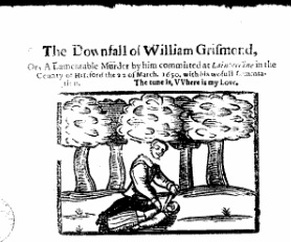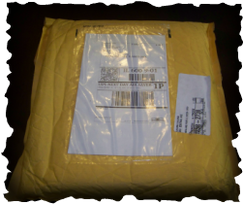 My book started years ago, when I was a graduate student, pouring over 17th century murder ballads. The ballads served as musical 'true accounts' of murderers who wrote letters to their victims, urging them to rendezvous in dark deserted fields. I knew I had to write about these monsters. I drank lots of coffee.  I spent years writing this first book, scene by scene, in little half hour bursts, at coffee shops, on the train, when the kids were sleeping, until one day--in 2010-- I finished. Even my husband--alpha reader extraordinaire--did not know much about the story. "It's set in the seventeenth century," I'd mumble. "A servant gets killed. Another servant tries to figure it out. Stuff like that." But eventually, I asked him and a few other trusted friends to read the book. I revised again, queried, queried, queried, while writing an entirely different book in the interim. In 2011, I got my wonderful agent who quickly connected me to my equally wonderful editor at Minotaur. My journey was no longer an imaginary jaunt; the path to publication was suddenly very real.  In 2012, more changes happened. The title of my book got changed. My publication date got pushed back. My beautiful cover was revealed. Multiple revisions happened. Copy edits made me crazy, but I learned a lot in the process. I had my first public appearance as a novelist ("2 minutes at Bouchercon"). At some point, I received my ARCs. 2013. Months still passed. My book began to be publicized. I reached the 100 Day mark. Another few months passed. My book started to be reviewed. My hardback copy came in the mail. And now...Be still my heart... MY BOOK IS FINALLY HERE!!!!
Thanks to all my colleagues, friends and family--especially my husband--who made this possible!!!!
5 Comments
"Monsters" in seventeenth-century England were funny sorts--not like today's zombies or even Frankenstein's creature--but rather aberrations of humanity. Real human beings who, like my antagonist in Monster at the Gate, had crossed society's lines--committed murder or other unspeakable acts. Their humanity was restored only by execution--usually by public hanging.
(Ironically, the early modern crowds who gathered to watch these executions--men, women, and children who cheered on the criminals' grim ends--were not themselves considered to be monsters, despite their bloodlust and fascination with the gallows. But hey, people aren't always consistent, are they?) Booksellers and printers understood and exploited these sentiments, tapping into the public's fears, passions, and anxieties. Long before modern tabloids sensationalized criminal activity, early modern woodcuts, ballads and chapbooks conveyed to their readers 'true accounts' of each monstrosity, offering sordid and titillating details of the crime, the victim's last hours, and the monster's motivations. Implicit in many of these accounts was a warning--less to future victims, and more to society at large--that monsters walked among them. Though masked and disguised as humans, their monstrous nature would out. Woe to the community who did not catch and put an end to them! So when reading these accounts, I always wondered what parts of the sensationalized accounts were true, what was contrived, and most of all--Who were these monsters, really, when they weren't being monsters? |
Susanna CalkinsHistorian. Mystery writer. Researcher. Teacher. Occasional blogger. Categories
All
Archives
May 2023
|

 RSS Feed
RSS Feed